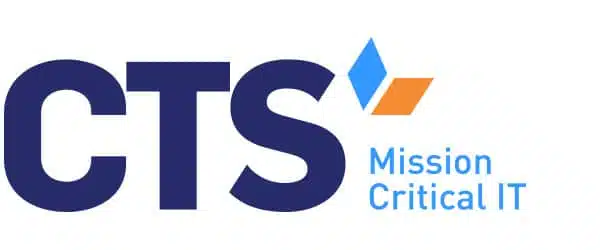Nonprofit leaders juggle a complex mix of responsibilities—advancing the mission, managing limited budgets, and ensuring smooth operations. Technology can either streamline those efforts or slow them down. Yet many organizations lack the internal IT leadership needed to make strategic decisions that move the needle.
Hiring a full-time Chief Information Officer (CIO) isn’t always feasible. Tight budgets and competing priorities make it difficult to justify a six-figure salary for a single role—no matter how critical. This is where the concept of a virtual CIO is relevant.
A vCIO can help nonprofits align their technology strategy with broader business objectives—without the overhead of a full-time executive. But like any external partnership, this solution comes with both opportunities and limitations.
What is a vCIO?
A virtual Chief Information Officer (vCIO) offers executive-level IT leadership on a flexible, often part-time basis. Instead of hiring someone full-time, nonprofits can engage a seasoned professional to handle high-level IT responsibilities as needed.
The vCIO works alongside internal leadership to:
- Shape a technology roadmap that supports organizational goals.
- Provide guidance on technology investments and infrastructure upgrades.
- Lead vendor management, contract negotiations, and IT partnerships.
- Offer insight on technology trends and regulatory compliance.
- Help teams develop and implement secure, scalable IT strategies.
vCIO vs. Traditional CIO
| Feature | Traditional CIO | Virtual CIO |
|---|---|---|
|
Employment
|
Full-time, in-house
|
Contract-based, offsite or hybrid
|
|
Cost
|
High salary and benefits
|
Fractional hourly or weekly cost, scalable
|
|
Integration
|
Deeply embedded in company culture
|
May require onboarding time
|
|
Focus
|
Day-to-day and strategic
|
Primarily strategic planning
|
|
Flexibility
|
Fixed capacity
|
Adjustable scope and hours
|
Why Nonprofits Might Consider vCIO Services
Leadership teams in nonprofit organizations often face pressure to do more with less. When internal IT resources are stretched thin or missing altogether, the need for strategic guidance doesn’t go away; it grows. A virtual CIO offers a path forward.
Common Challenges Driving vCIO Adoption
These are some of the persistent issues that prompt nonprofit leaders to explore vCIO services:
- No Internal IT Leadership: Day-to-day IT management might be handled, but strategic planning often falls through the cracks. A vCIO brings executive-level thinking to long-term technology decisions.
- Budget Constraints: Hiring a full-time CIO is cost-prohibitive for many. vCIOs allow access to leadership without the burden of full-time compensation packages.
- Outdated or Disconnected Systems: Managing too many disconnected tools leads to inefficiencies and increased support costs. A vCIO can help consolidate and modernize the tech stack.
- Unclear Technology Direction: When IT decisions are reactive rather than proactive, organizations miss opportunities for growth and optimization. A technology roadmap offers clarity.
- Shadow IT and Unapproved Tools: Staff may use unsanctioned software, exposing the organization to risk. A vCIO implements controls that enforce safe, mission-aligned tech usage.
- Misalignment with Business Objectives: Technology should be a lever, not a barrier. A vCIO helps ensure that every system supports your business goals and mission outcomes.
Learn more: Why Aligning Business and IT Strategies is So Important
The Pros of Hiring a vCIO
Strategic technology leadership can transform how nonprofits operate. A virtual CIO brings high-level IT strategy into focus without the commitment of a full-time hire.
Here’s how organizations can benefit:
Cost Efficiency Without Compromise
Maintaining control over operational costs is a constant balancing act. A vCIO provides access to executive-level IT strategy at a fraction of the cost of a full-time CIO. This model supports nonprofits in making intentional, value-driven technology investments.
- No salary, benefits, or long-term employment contracts.
- Scalable engagement based on project size or budget.
- Predictable monthly costs that align with financial planning cycles.
Strategic Technology Planning
A vCIO helps develop a technology roadmap that doesn’t just look good on paper. It’s actionable, adaptable, and aligned with your mission.
- Builds IT strategy around core business objectives.
- Prioritizes initiatives that directly support service delivery and operational efficiency.
- Identifies legacy systems or tools that no longer serve the organization.
Align IT and Organizational Goals
Many nonprofits operate with fragmented systems and informal processes. A vCIO works to align technology with your business, bridging the gap between operational needs and technical execution.
- Coordinates with leadership to ensure IT initiatives serve broader goals.
- Supports informed decision-making with measurable outcomes.
- Provides structure for evaluating technology investments.
Expert Vendor Management
Managing multiple vendors without centralized oversight often leads to inefficiencies. A vCIO brings cohesion.
- Reviews existing contracts and identifies areas for savings or renegotiation.
- Streamlines communication between teams and third-party providers.
- Introduces trusted partners when needed, without bias.
Industry Insights on Technology Trends
Staying current with technology is essential, especially as donor expectations and service models evolve. A vCIO helps your organization leverage technology thoughtfully.
- Advises on digital transformation opportunities.
- Identifies trends relevant to your mission, not just hype.
- Ensures compliance with industry regulations and data protection requirements.
Learn more: Cybersecurity Tips for Nonprofits: Stay Safe and Spend Less
The Cons and Risks of Hiring a vCIO
Every solution carries trade-offs. While vCIO services offer numerous advantages, it’s important to consider the potential limitations, especially in fast-moving or highly personalized environments.
Here’s why a vCIO may not be the right fit for your nonprofit:
Limited Availability
A vCIO isn’t on-site full-time. While that flexibility reduces costs, it can also delay responses in urgent scenarios.
- May not be immediately reachable in a crisis.
- Requires internal staff to handle day-to-day tech issues or triage until the vCIO is available.
Learning Curve
Even the most experienced vCIO needs time to understand your organization’s systems, culture, and strategic vision.
- Initial engagement period may involve assessments and discovery.
- Institutional knowledge may be slower to accumulate compared to a full-time executive.
Outsourced Nature of the Role
Outsourcing IT leadership means placing strategic responsibilities in external hands. For some, this feels like a loss of control.
- Requires clear communication and defined expectations.
- May lead to disconnects if internal teams aren’t fully engaged in planning processes.
Cultural and Organizational Fit
A vCIO may not always have the same day-to-day visibility as an internal leader. That distance can affect team dynamics.
- Less present in the daily rhythm of the organization.
- May need to work harder to earn trust and buy-in from long-term staff.
Learn more: IT Budgeting for Nonprofits: Planning Ahead for 2025
Is a vCIO is Right for Your Nonprofit? Questions to Consider
Not every nonprofit organization needs—or is ready for—a virtual CIO. The decision depends on where you are today, what you’re trying to achieve, and how technology currently supports that mission.
Start with These Questions
- Do we have a clear, long-term technology strategy?
- Are we confident that our current tools are the best fit for our needs?
- Is our leadership team making technology decisions without technical guidance?
- Are we often in a reactive mode, fixing problems instead of planning ahead?
- Have we experienced compliance concerns or security incidents?
- Are we unsure how to prioritize IT spending or evaluate technology investments?
Consider a vCIO If:
- You want to develop and implement a structured IT plan without hiring a full-time executive.
- Technology decisions have become a bottleneck to scaling programs or services.
- Vendor contracts and software renewals feel disjointed and difficult to manage.
- You need someone to help your team see beyond the day-to-day and think strategically.
Next Steps: Assess Your Technology Strategy
For nonprofit organizations, where every dollar and decision carries weight, a vCIO offers strategic leadership tailored to your mission, goals, and constraints.
There are trade-offs to consider, and the right fit depends on your current capacity, challenges, and vision. But when implemented thoughtfully, vCIO services can bring clarity, reduce risk, and help you leverage technology as a tool for real impact—not just infrastructure.
CTS helps mission-driven organizations manage their technology with clarity, empathy, and precision. If your nonprofit is struggling to align technology with business goals, our vCIO services could be the bridge between where you are and where you want to go.




